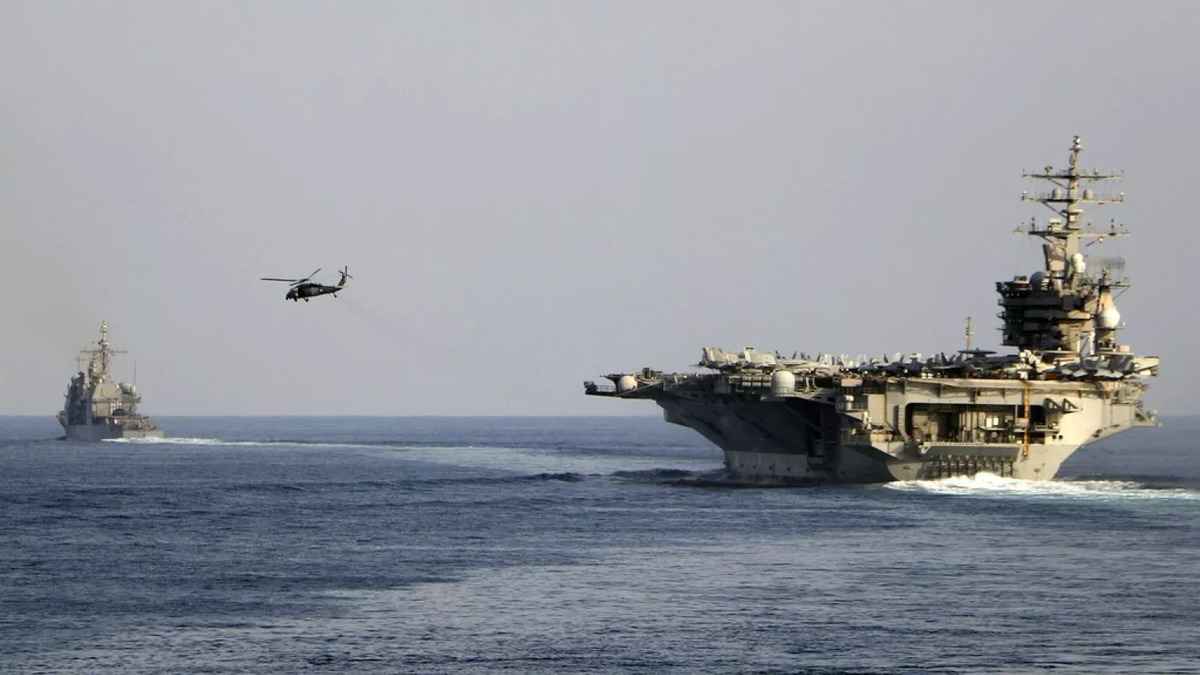The Strait of Hormuz, a narrow maritime corridor linking the Persian Gulf with the Gulf of Oman, is once again at the center of international concern amid intensifying tensions between Iran and Israel. As the conduit for nearly 20% of global oil shipments, any disruption here could trigger worldwide economic consequences.
Significance of the Strait of Hormuz
At just 33 kilometers wide at its narrowest stretch, the strait accommodates two vital shipping lanes—each merely 3 kilometers across. This passage serves as the primary export route for crude oil from key Gulf producers, making it essential for energy-importing countries such as India. A blockade or military escalation could severely disrupt global energy flows and trade.
The Geopolitical Backdrop
Surrounded by strategically sensitive nations—Oman, the UAE, Qatar, Bahrain, Saudi Arabia, Kuwait, Iraq, and Iran—the strait’s location amplifies its geopolitical weight. To safeguard maritime stability, the United States sustains a naval presence in the region. The U.S. Fifth Fleet, headquartered in Bahrain, conducts regular patrols and surveillance operations to ensure freedom of navigation and deter potential threats.
Consequences of a Potential Closure
If Iran acts on its threat to close the strait, global energy markets could face a dramatic upheaval. Analysts project crude oil prices could skyrocket to $100–$150 per barrel from the current average of $76.45. Economies dependent on oil imports would be particularly vulnerable. Moreover, liquefied natural gas (LNG) shipments through the region would be severely affected, further straining global supply chains.
Bypassing the Bottleneck: Alternative Routes
While alternatives exist, they are far from equivalent in capacity. Saudi Arabia’s East-West Pipeline and the UAE’s Abu Dhabi Crude Oil Pipeline offer limited relief. The East-West Pipeline can transport up to 5 million barrels per day, but only a fraction of that capacity is presently utilized. These alternatives also entail longer routes and increased logistical challenges, making them insufficient to replace the Strait entirely.
Iran’s Naval Leverage
Iran has invested significantly in asymmetric naval capabilities. Its fleet includes fast attack boats, midget submarines, and the ability to deploy naval mines—tools that could be used to obstruct passage and delay maritime traffic. Mine clearance in such scenarios is complex and time-consuming, potentially halting shipments for extended periods.
Global Reactions and Strategic Dilemmas
A move by Iran to seal off the strait would likely provoke a coordinated military response from the United States and allied forces. However, such action would also hurt Iran and its partners, including China, who rely heavily on oil flowing through this waterway. Southeast Asia, in particular, would face immediate energy shortages, underscoring the shared global dependency on this maritime artery.



